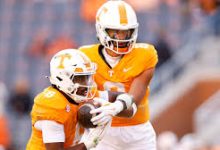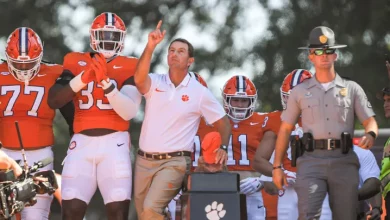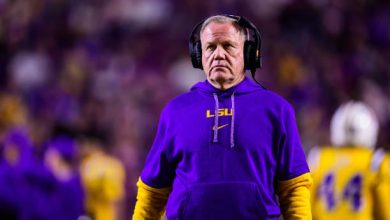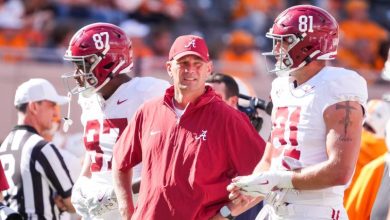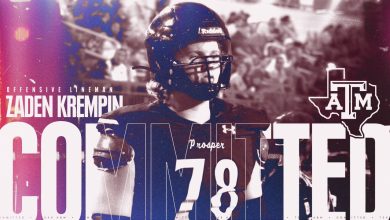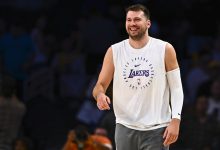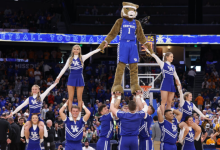Kentucky guard Koby Brea rises into ESPN’s NBA Draft top 50, showcasing his sharpshooting skills and growing professional potential.
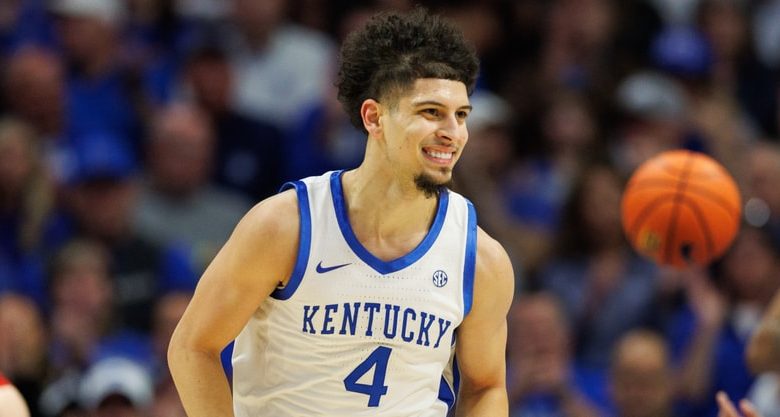
The road to the NBA Draft is never a straight line—especially for players like Kentucky’s Koby Brea, who have forged their path through resilience, growth, and undeniable talent. In the latest ESPN NBA Draft Big Board update, Brea’s name appeared in the top 50 prospects for the 2025 draft, marking a significant leap for the sharpshooting guard who has become an integral part of Kentucky’s resurgence under head coach Mark Pope.
This recognition is more than a personal milestone for Brea. It’s a testament to the evolving nature of player development in college basketball and a signal to NBA teams that a highly skilled, experienced, and mentally mature wing like Brea can offer immediate value at the next level.
From Dayton to Lexington: The Underrated Transfer
Koby Brea didn’t arrive at Kentucky with the same fanfare as many of the Wildcats’ typical five-star recruits. A native of Washington Heights, New York, Brea spent four years at Dayton, where he carved out a role as one of the best sixth men in the country. A two-time Atlantic 10 Sixth Man of the Year, Brea averaged 8.1 points per game in his final season at Dayton while shooting an eye-popping 44.8% from three-point range.
But it wasn’t just the numbers that made Brea a prized transfer in the portal—it was his composure, efficiency, and the respect he earned as a disciplined two-way contributor. When Kentucky hired Mark Pope in 2024, one of the new coach’s first big recruiting wins wasn’t a freshman or a five-star—it was convincing Brea to bring his talents to Lexington.
For Pope, building a roster with a mix of veterans and blue-chip freshmen was critical. And Brea fit that mold perfectly. He was battle-tested, experienced, and eager to prove himself on the biggest stage in college basketball.
Breakout in Lexington: Sharpshooting and Consistency
In his first season with the Wildcats, Brea quickly established himself as one of the best shooters in the SEC. He averaged:
- 11.6 points per game
- 3.2 rebounds
- 1.3 assists
- 47.0% shooting from the field
- 44.2% from beyond the arc
His shot mechanics are textbook: a quick release, balanced footwork, and elite touch from deep. Brea doesn’t just hit open threes—he drills contested shots, relocates effectively without the ball, and moves confidently through screens. His three-point shooting has not only earned him national attention but also opened up Kentucky’s offense in crucial ways.
Pope’s up-tempo, modernized offensive system relies heavily on spacing and perimeter shooting. Brea’s ability to stretch the floor made him an indispensable part of the Wildcats’ starting five. Defenses were forced to account for his range, which opened up driving lanes for guards and freed up post players like Aaron Bradshaw and Jayden Quaintance (before injury) to operate in space.
Beyond the numbers, Brea’s impact could be felt in how Kentucky controlled pace, punished zone defenses, and created offensive balance.
What NBA Scouts Are Seeing
Now ranked inside the top 50 of ESPN’s draft board, Koby Brea is no longer flying under the radar. Scouts are drawn to his elite shooting, positional size (6’7”), and veteran poise. In a league where spacing is paramount and three-point shooting is more valuable than ever, Brea projects as a plug-and-play wing capable of contributing off the bench immediately.
NBA comparisons for Brea have included:
- Max Strus (Cleveland Cavaliers): A capable shooter with size who thrives in off-ball actions and can defend multiple positions.
- Luke Kennard (Memphis Grizzlies): A perimeter sniper who understands his role and plays with a high basketball IQ.
While Brea may not project as a primary playmaker or a star, his floor as a reliable rotational wing makes him a strong second-round value—or even a late first-round steal for a team in need of shooting and spacing.
The Value of Experience
One of the biggest advantages Brea holds over many of his draft peers is experience. In an NBA climate where many players enter the league at 19 or 20 with raw talent but little seasoning, Brea offers maturity, discipline, and game-readiness. He’s seen multiple defensive schemes, faced physical challenges, and knows how to play within a system.
In postseason settings—both at the collegiate and professional level—those traits matter. Coaches value players who can execute under pressure, who understand time-and-score situations, and who don’t make costly mistakes in crunch time. Brea’s time at Dayton and Kentucky has honed those skills, making him one of the more “NBA-ready” wings in this year’s draft class.
Leadership and Locker Room Presence
Brea’s rise isn’t just about skill—it’s about character. Teammates and coaches consistently praise his leadership, work ethic, and communication. At Kentucky, he embraced a mentorship role with younger players and became a calming voice during in-game adversity.
For NBA franchises, especially those with young cores or playoff aspirations, players like Brea serve a dual purpose: they contribute on the floor and stabilize the locker room.
A Model for Transfer Success
Koby Brea’s story also speaks volumes about the changing face of college basketball. In the transfer portal era, players can reinvent themselves in new environments—and Brea is the blueprint. His leap from a mid-major contributor to a high-major standout and NBA prospect validates the value of mature, experienced transfers who bring more than just numbers.
His journey also reflects well on Kentucky and Mark Pope’s ability to identify talent that fits the culture and system. In an offseason filled with coaching changes and roster uncertainty, Brea’s commitment was a stabilizing force.
Kentucky’s National Profile and Player Development
Having a player like Brea rise into draft contention helps Kentucky in multiple ways:
- Recruiting Pitch: Pope can now point to Brea as an example of how his program develops and showcases talent—whether they’re five-star freshmen or grad transfers.
- NBA Pipeline Credibility: Kentucky has long been viewed as an NBA factory. Brea’s emergence maintains that perception and proves that the program’s reach goes beyond just top-ranked high school prospects.
- Team Performance: Brea’s shooting was a central reason for Kentucky’s improved offensive metrics during the season. His spacing and gravity made life easier for everyone on the court.
What’s Next: NBA Combine and Draft Workouts
With Brea now entrenched in the top 50, the next few months are crucial. He’ll participate in NBA Draft workouts, meet with team executives, and possibly attend the combine (if invited). How he performs in these controlled settings—particularly in shooting drills, agility tests, and interviews—could elevate him even further.
His clean shooting form, consistent mechanics, and understanding of defensive principles will all play well in pre-draft evaluations. If he shoots lights out during workouts—and by all accounts, that’s highly likely—he could see his stock climb into late first-round conversations.
Projected Role in the NBA
So what will Koby Brea be in the NBA?
He likely projects as a role player, but a highly valuable one. Teams like the Miami Heat, Milwaukee Bucks, Golden State Warriors, and Boston Celtics have built success around spacing the floor with disciplined shooters and defenders. Brea fits that mold.
He’ll need to continue developing his ability to defend quicker guards and work on his strength to handle more physical matchups, but his foundation is solid. His role could resemble that of players like Duncan Robinson or Doug McDermott—high-IQ wings who know their strengths and execute their role at a high level.
Final Thoughts: A Draft Climb That Shouldn’t Be Overlooked
Koby Brea may not be the flashiest name in the 2025 NBA Draft pool. He doesn’t have viral dunks or 30-point games lighting up social media. But what he does have is a polished, professional approach to the game of basketball—and the skill set to thrive at the next level.
His climb into ESPN’s Top 50 is well-earned and speaks to a larger truth in today’s game: there’s always room for elite shooters with the mindset to improve, the humility to lead, and the toughness to perform under pressure.
For Kentucky, Brea’s rise is yet another success story in their rich basketball legacy. And for Brea, it’s the validation of years of hard work and the beginning of what could be a long and meaningful professional career.
Whether his name is called late in the first round or early in the second, one thing is clear: Koby Brea is ready—and the NBA is taking notice.

